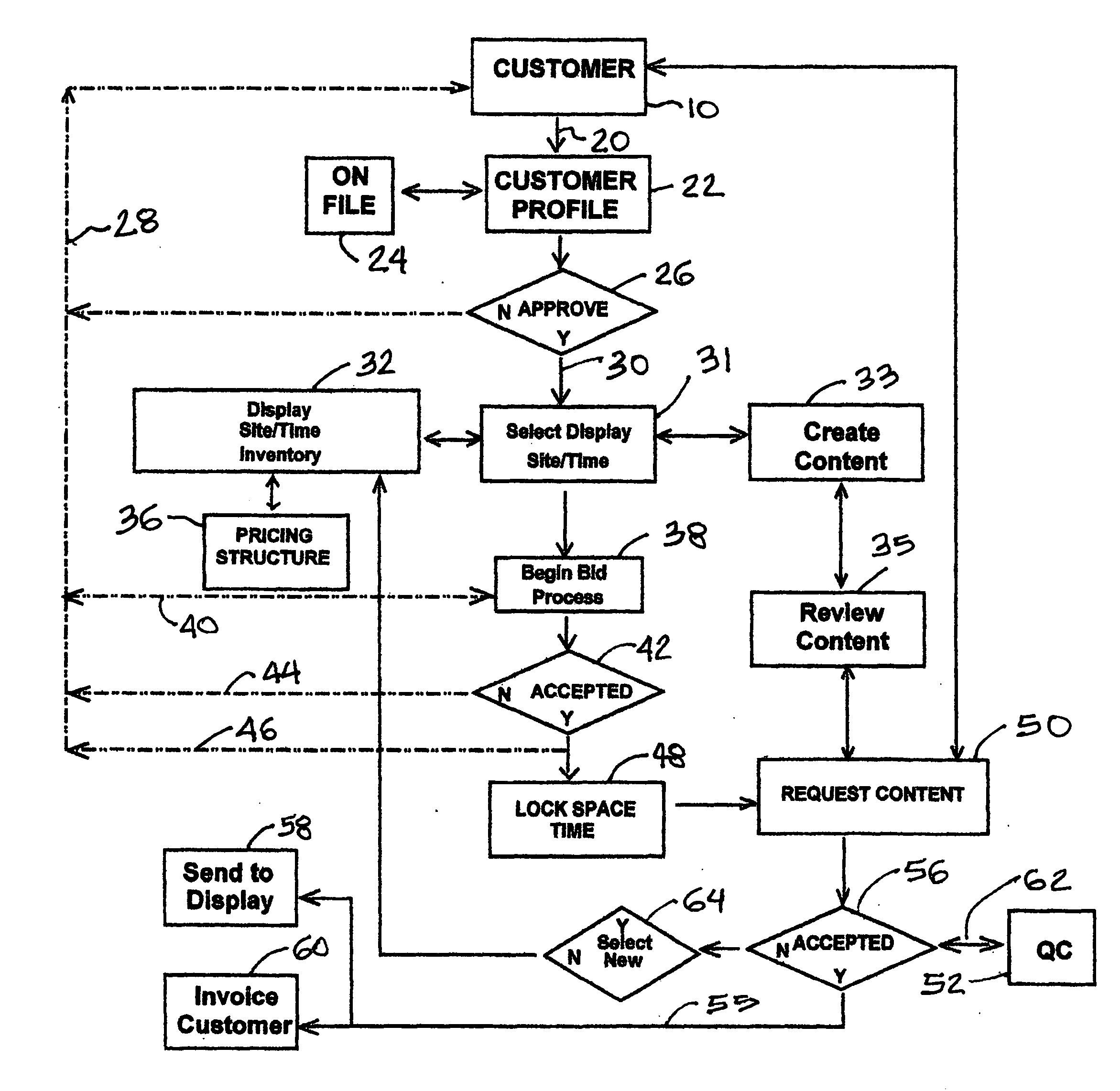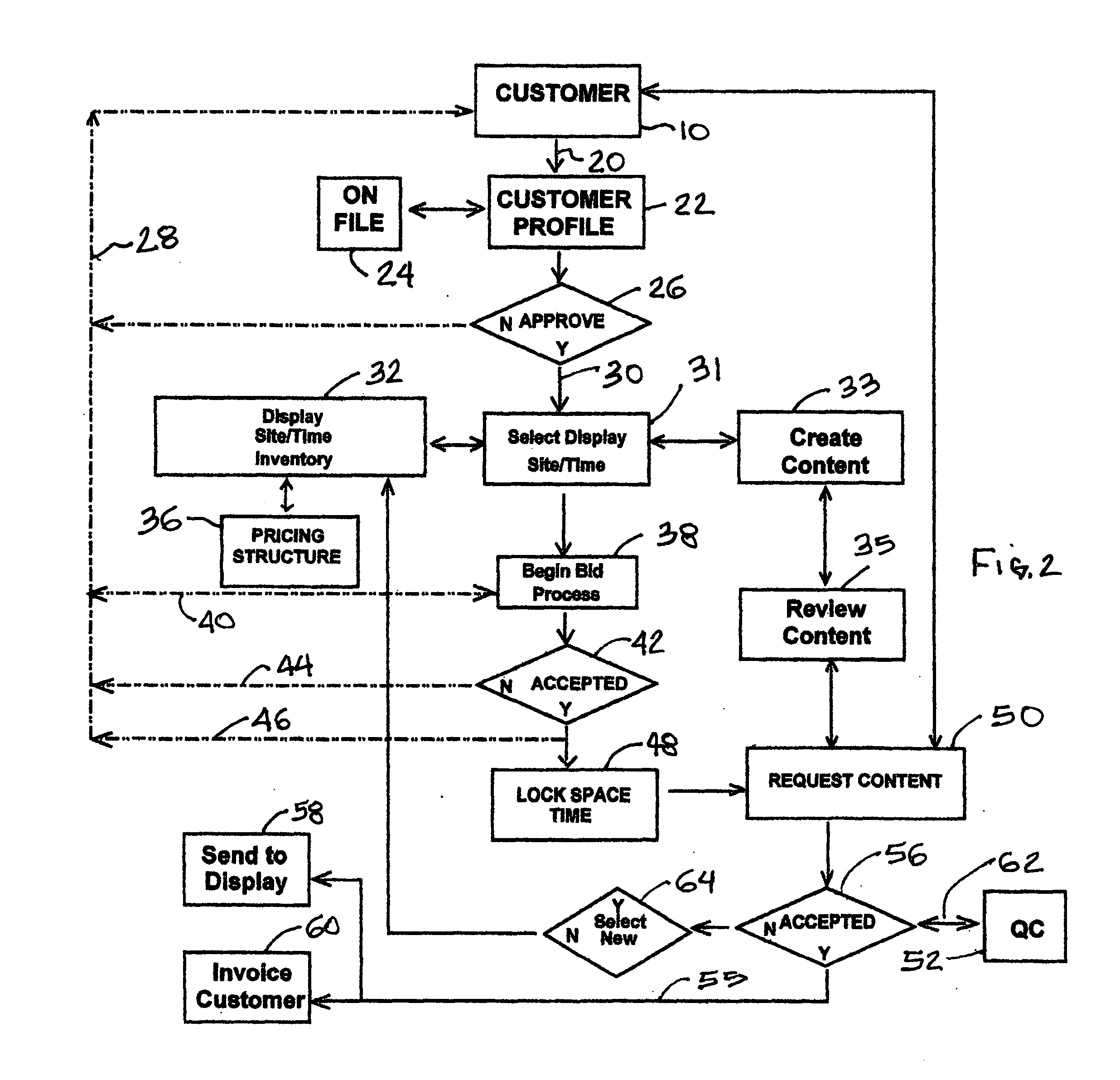Method for providing on-line sale and management of advertising space on signs and billboards
a technology of advertising space and management method, applied in the field of online commerce, can solve the problems of difficult determination of advertising, small number of passing individuals, and fraction of passing individuals may be potential golf consumers, and achieve the effect of maximizing the return on investment in the advertising schem
- Summary
- Abstract
- Description
- Claims
- Application Information
AI Technical Summary
Benefits of technology
Problems solved by technology
Method used
Image
Examples
Embodiment Construction
[0066]An overview of the system is shown in FIG. 1. One or more customers 10 will log-in to the system website 12. The site 12 can be accessed from anywhere on the Internet, for example from an office terminal by the employee of a company or from a home, school, agency or other site. Once logged in, the customer 10 will provide verification and billing information. Once accepted, the customer will be directed to various functions and services on the website, including the location and space times available on various billboards. Typically, the verification information will provide criteria for identifying which billboard locations are of interest to the customer and these will be displayed to him.
[0067]Once the customer has selected one or more locations and times, he then places an order. This is done by selecting either the guarantee price, which assures him of the space and time he has selected, or by starting the bid process to participate in an on-line auction for the space. On...
PUM
 Login to View More
Login to View More Abstract
Description
Claims
Application Information
 Login to View More
Login to View More - R&D
- Intellectual Property
- Life Sciences
- Materials
- Tech Scout
- Unparalleled Data Quality
- Higher Quality Content
- 60% Fewer Hallucinations
Browse by: Latest US Patents, China's latest patents, Technical Efficacy Thesaurus, Application Domain, Technology Topic, Popular Technical Reports.
© 2025 PatSnap. All rights reserved.Legal|Privacy policy|Modern Slavery Act Transparency Statement|Sitemap|About US| Contact US: help@patsnap.com



